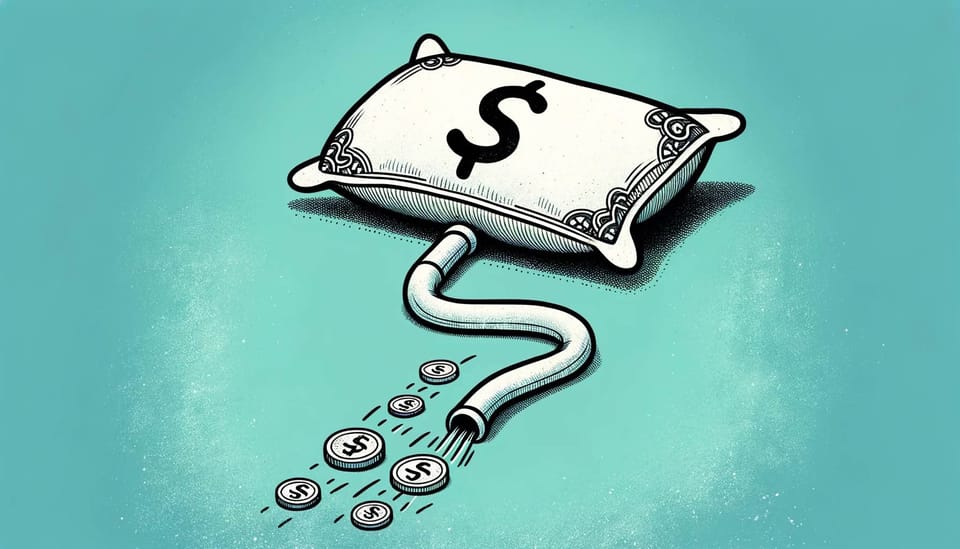Cushion vs Flow

Everything in money comes down to cushion vs flow.
Cushion is cash (or anything easily and quickly convertible to cash).
Flow is money in (and out).
To feel good/safe/whatever about your money situation, you need have a cushion large enough to cover your flow (for a good time period) and/or a healthy balance between inflow and outflow.
What's been striking me lately is the relationship between the two.
You can use cushion to create flow or you can use flow to create cushion.
Flow to Cushion
Not everyone has cushion, but everyone has flow. So let's run through some flow examples first.
Your flow is money in (income) and out (expenses).
- $100k salary? That's flow.
- Side hustle book making $1k/mo? That's flow.
- House or car payment? That's flow.
The goal of flow is for in to be higher than out – enough higher that you can create cushion.
Cushion is safety.
Made Up Example
A salary that brings home $60k after taxes = $5k/mo.
$4k/mo in expenses means your cushion grows. $5k/mo means your cushion shrinks.
- Person #1 - $5k/mo take home, $5k expenses/mo. $100k cushion.
- Person #2 - $5k/mo take home, $5k expenses/mo. $1k cushion.
Furnace quits working during cold weather and you need a new one...
Person #1 spends $10k on furnace by reducing cushion to $90k.
Person #2 has a new $10k stressor. They likely need a payment plan, which means interest. They pay > 5% more than Person #1, which makes building a cushion even harder.
Real World Example
It's dramatically easier to increase cushion than to climb back to $0.
If you want to increase your cushion (or reduce your reverse cushion), you can...
- increase your income
- decrease your expenses
- do all of the above
At Ordered List, we paid ourselves lower salaries and lived on close to that amount.
A few times a year, we'd distribute profit and randomly get $10k+ checks.
Instead of wasting those checks, I created cushion by building up savings and paying off debt – like student loans, cars and our home.
Debt is flow (and reverse cushion). It's flow because debt always comes back in the form of money out (payments for principal + interest).
So flow to cushion happens by controlling money in and out.
What about the opposite?
Cushion to Flow
When Microsoft bought GitHub, I received cushion.
I left a portion of that cushion in cash and investment accounts.
Then, I converted the rest of the cushion to flow by buying into Box Out Sports and purchasing farm land with my dad.
In return for that cushion, I receive flow in the form of a pay check (and profit) from Box Out and a rent check from the farm land.
I try to keep money out below money in so I can move more of these two flows into cushion.
Cushion vs flow holds true in business as well.
At Box Out we keep 3-6 months cushion at all times (source).
On top of that cushion, we have a constant flow of money in (sales) and out (software, servers, and people).
When the cushion gets large enough, we convert it to flow by cutting checks to the partners.
Then, each partner can convert this flow to cushion (save it) or keep it as flow (spend it) as they see fit.
It's that simple.
Figure out what cushion you need to feel comfortable. Use well-balanced flow to build that cushion.
Note that I didn't say "It's that easy". Out is easy to increase.
The hard part is balancing flow between in and out.